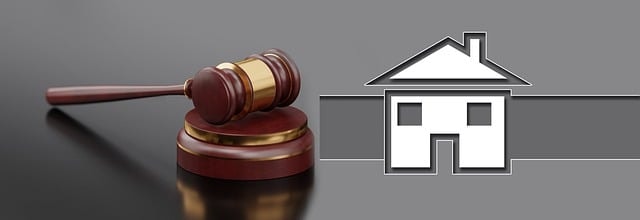Understanding the Foreclosure Tenant Protection Act

Introduction
When a property goes into foreclosure, it’s not just the homeowner who’s affected. Tenants living in foreclosed properties often find themselves in a precarious situation. The Protecting Tenants at Foreclosure Act (PTFA) was created to address this issue. This federal protecting tenants law ensures that renters have adequate time to find new housing after a foreclosure, requiring new owners to give notice or honor existing leases. Let’s explain this federal law for tenants and new property owners.
What is the Protecting Tenants at Foreclosure Act?

The PTFA is a federal law that provides important protections for tenants living in foreclosed properties. Originally enacted in 2009, it expired in 2014 but was permanently restored in 2018.
Key points:
- This applies to residential properties
- Covers tenants with bona fide leases
- Provides protections during ownership transitions due to foreclosure
Core Protections Under the PTFA

1. Notice Period
One of the most significant protections is the notice requirement:
- Tenants must receive at least 90 days’ notice to vacate
- This applies even if state law allows for shorter notice periods
“This 90-day buffer is crucial,” explains housing attorney Sarah Johnson. “It gives tenants time to find new housing without the immediate threat of eviction.”
2. Honoring Existing Leases
The PTFA requires new owners to honor existing leases under certain conditions:
- If the tenant has a bona fide lease that was entered into before the foreclosure sale
- The lease term must be honored unless the new owner intends to occupy the property as their primary residence
“Many tenants don’t realize they can often stay until their lease ends, even after foreclosure,” notes real estate lawyer Michael Brown.
3. Protection for Month-to-Month Tenants
Even without a long-term lease, tenants have rights:
- Month-to-month tenants, including those with leases terminable at will, are still entitled to the 90-day notice
- This applies regardless of any state laws that might allow for shorter notice periods
What Makes a Lease “Bona Fide”?
For a lease to be considered bona fide under the PTFA and for tenants to qualify as bona fide tenants, it must meet certain criteria:
- The tenant is not the mortgagor (property owner) or a child, spouse, or parent of the mortgagor
- The lease resulted from an arms-length transaction
- The rent is not substantially less than fair market rent
“These criteria prevent homeowners from creating last-minute leases to delay foreclosure,” explains Judge Maria Rodriguez.
Limitations of the PTFA
While the PTFA provides significant protections for tenants’ rights, it’s essential to understand its limitations:
- It doesn’t prevent evictions altogether; it mainly provides additional time and protections
- The new owner can still terminate a lease if they intend to use the property as their primary residence
- It doesn’t override more protective state or local laws
Steps for Tenants in Foreclosed Properties
If you’re a tenant in a property facing foreclosure:
- Stay informed about the property’s status
- Continue paying rent as usual
- Keep all lease documents and rent receipts
- Be wary of scams or false information from unauthorized individuals
- Seek legal advice if you receive an eviction notice
- Seek legal advice if an eviction case is initiated
“Documentation is key,” advises tenant rights advocate John Smith. “Keep everything in writing and don’t make any agreements without proper legal consultation.”
The New Owner’s Responsibilities
New owners of foreclosed properties have specific obligations under the PTFA:
- Provide proper notice to tenants
- Honor existing bona fide leases
- Maintain the property by local laws, including property maintenance responsibilities.
- Follow proper legal procedures for any evictions.
“New owners should be aware that they’re essentially stepping into the shoes of the previous landlord,” says real estate attorney Lisa Thompson.
State and Local Laws: Additional Protections
While the PTFA provides a federal baseline of protection for tenants in both single-family homes and multi-unit properties, many states and localities have additional laws:
- Some areas require just cause for evictions, even after foreclosure
- Certain cities have specific ordinances protecting tenants in foreclosed properties
- State laws may provide longer notice periods or additional tenant rights
Frequently Asked Questions
Q: Does the PTFA apply to all types of residential properties? A: Yes, it applies to virtually all residential properties, including single-family homes and multi-unit buildings.
Q: Can I be evicted immediately if the new owner wants to move in? A: No, you’re still entitled to at least 90 days’ notice, even if the new owner intends to occupy the property.
Q: Do I have to keep paying rent during foreclosure? A: Yes, you should continue paying rent to whoever has the legal right to collect it, which may change during foreclosure.
Q: What if my state law provides more protection than the PTFA? A: In that case, the more protective state law would apply. The PTFA sets a minimum standard but doesn’t override stronger tenant protections.
Conclusion: Know Your Rights
The Protecting Tenants at Foreclosure Act provides crucial safeguards for tenants caught in the foreclosure process. Understanding your rights under this law enables you to navigate this challenging situation more effectively. Remember:
- You’re entitled to at least 90 days’ notice before eviction
- Bona fide leases must be honored in most cases
- Continue paying rent and keeping records
- Seek legal advice if you’re unsure about your situation
While foreclosure can be stressful for all involved, the PTFA ensures tenants have time and protections to secure their next home.
Related Terms: Protect tenants, existing lease,













